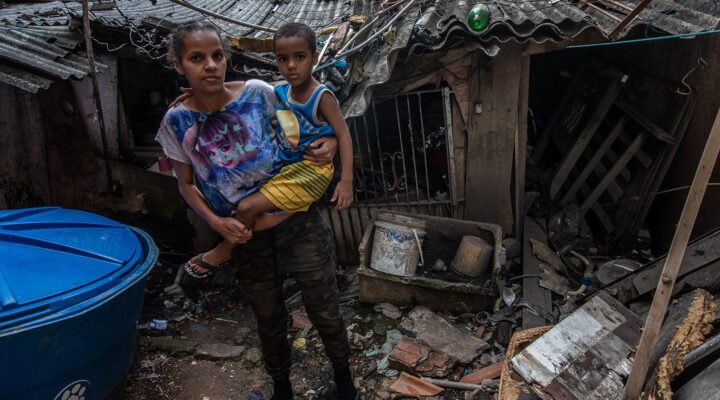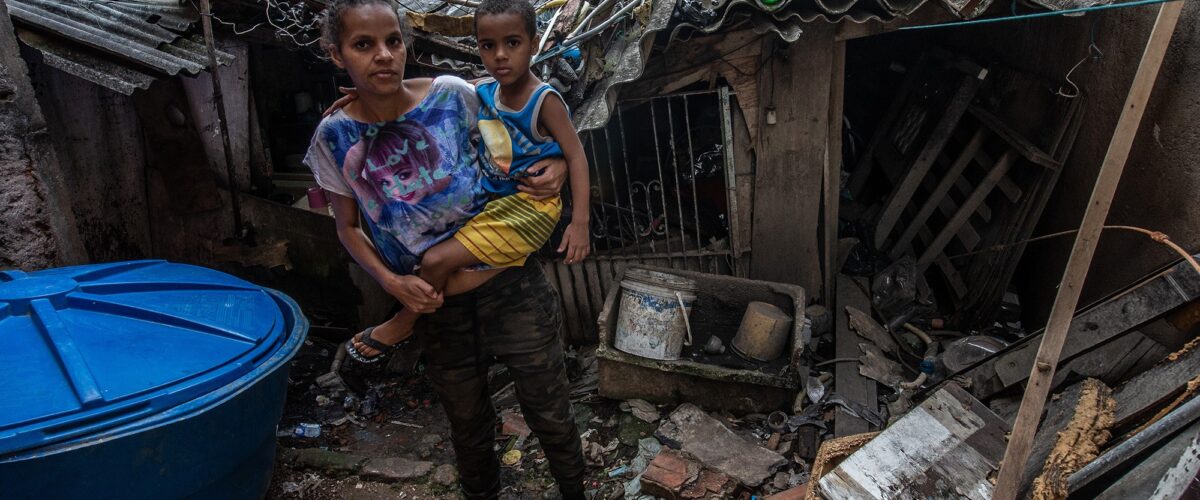The COVID-19 pandemic has undone decades of progress in addressing global poverty and hunger and made the world an altogether harder place to live for millions of people, according to a new report by World Relief.
“From 1990 until 2015, we witnessed a consistent downward trend of global poverty rates, from nearly 36% to just 10% of people at the extreme poverty level living on just $1.90 a day. COVID-19 changed everything, and today 97 million more people were pushed into poverty as a result of COVID-19,” the Christian humanitarian organization reported in its March 15 study, “COVID-19 Impact on the World’s Poor.”
In a virtual news conference, ministry officials in the U.S. and Africa painted a stark picture of the pandemic’s impact on already at-risk populations and urged churches and governments around the world to respond with prayer, compassion and assistance to communities ravaged by the coronavirus outbreak.

Myal Greene
“COVID-19 has hit the world’s most vulnerable at a time and in ways that are really ferocious, and at a level of devastation we have not seen in our lifetime. And as a result, the pandemic has resulted in one of the greatest humanitarian issues in recorded history,” World Relief President Myal Greene said.
He added that nearly 100 million people, mostly in sub-Saharan Africa, have fallen into extreme poverty since 2020, resulting in the reversal of three to four years of international development. “And for the first time in my lifetime, we have seen a rise in the number of people living in extreme poverty.”
Children especially vulnerable
The study drilled into the way children have been especially victimized by the pandemic. “The number of children affected by COVID-19-associated orphanhood and caregiver death is estimated to have increased by 90% in just six months. Globally, schoolchildren have lost over 1.8 trillion hours of in-person learning, and only one in 10 students in the poorest countries have internet access, making remote learning inaccessible.”
Lanre Williams-Ayedun, senior vice president for international programs at World Relief, added heartbreaking details of the suffering experienced by children during the outbreak.

Lanre Williams-Ayedun
She cited a UNICEF report that found the threat faced by children in the outbreak has been the greatest danger seen in the organization’s 75-year history. “The hard-won progress we have made on child poverty, school education, nutrition, child protection — they are essentially being reversed because of the pandemic.”
The World Bank estimates at least 7 million children in the hardest-hit nations have dropped out of school since the pandemic began, leading them in turn into child labor situations, early marriage and malnutrition, Williams-Ayedun added.
Another study found that COVID-19 took just two years to orphan 5 million children. By comparison, HIV/AIDS took a decade to orphan that many children. “We are now up to 5.2 million children who have lost one or two parents, or a caregiver, due to COVID,” she said.
The status of already vulnerable women also sunk to appalling lows during the pandemic, including a frightening rise in physical abuse, Williams-Ayedun said.
Increased threats to women
“Even before COVID, one in three women worldwide experienced physical or sexual violence, mostly by an intimate partner. Emerging reports are showing us that all types of violence against women and girls, and particularly domestic violence, has amplified since the pandemic began. And it’s worsened by overwhelmed health care systems that cannot care for women in these situations with prenatal and postnatal care, lifesaving support and care for survivors.”
“Child marriages are increasing after years of decline, with a projected 10 million additional girls at risk due to COVID-19.”
World Relief’s report explained that COVID-19 lockdown procedures led to spikes in calls to domestic violence helplines and shelters. “Pre-pandemic livelihood and freedom of movement may have kept violence at home in check to a greater degree (though it still existed), but the results of economic tension and poor mental health during this pandemic have led to devastating consequences for women and children who live in constant close contact with violent partners and caregivers.”
Another disturbing trend heightened during the pandemic involves forced marriages for girls, the report found. “Child marriages are increasing after years of decline, with a projected 10 million additional girls at risk due to COVID-19. The reasons for this are many and include the fact that families need the extra money, having one less child in the house is one less person to feed, and closures of schools that make learning inaccessible.”
Women also have endured the brunt of pandemic-induced financial setbacks, World Relief reported. “Women globally have disproportionately suffered the socioeconomic impacts of COVID-19 as a result of job losses, reduced hours, increased pressures of care and domestic work and strains on both physical and emotional health. Mothers globally were nearly three times as likely as fathers to report taking on the majority or all of additional unpaid care work related to school or child care facility closures. Additionally, mothers of children under age 12 were most likely to move from employed to not employed status.”
The report added that “29% of women living with children lost their jobs compared to 20% of men living with children. Women and girls are also far less likely to receive relief from governments or NGOs.”
Large-scale suffering
But entire populations also have suffered economic and health consequences from the global pandemic, World Relief found. “Expectations from the start of the pandemic showed that the number of people facing acute food insecurity would nearly double to 265 million by the end of 2020.”
But current forecasting shows that acute food insecurity is likely to worsen even more in 20 West African nations alone: “Young children globally are bearing the brunt of the devastation, with 50 million suffering from wasting (low weight-for-height). There is virtually no aspect of livelihood and employment that COVID-19 has not interfered with.”

Matilda Matitha
The conditions are even more severe in places where malaria and HIV also are surging, said Matilda Matitha, World Relief’s country director in Malawi. “It’s a huge burden on health services.”
Drought is another danger complicated by COVID-19, said Elias Kamau, country director in Kenya where 2.8 million are currently in need of food assistance.

Elias Kamau
“This has created a risk of starvation for humans and also for their livestock. What you have is this huge drought situation decimating the foliage and the pastures for the animals and therefore affecting the availability of food. So, layer upon layer of crisis has made people unable to address the effects of COVID-19.”
Health care systems also have taken a huge hit, the report adds. “Throughout Africa, the pandemic has disrupted critical health services and undermined years of progress fighting other deadly diseases, including HIV, TB and malaria. And COVID-19 vaccine distribution, education and availability have been a problem. Poorer nations rejected more than 100 million doses of COVID-19 vaccines in one month alone because of insufficient storage facilities, vaccine hesitancy and overburdened health care systems.”
People of faith can push back against these trends by partnering with global relief organizations and by addressing hunger in their own neighborhoods, said Jenny Yang, vice president for advocacy and policy at World Relief.
“We fundamentally believe that it is through the influence and care of both churches and governments around the world that we can provide futures together with communities on the ground to mitigate the impacts of COVID-19 and to really reduce poverty globally, as well,” she said.
Related articles:
COVID-19 creating exponential increase in global poverty
Compassion International and Baylor form partnership against poverty
Want to help slow immigration to the U.S.? Address global hunger


